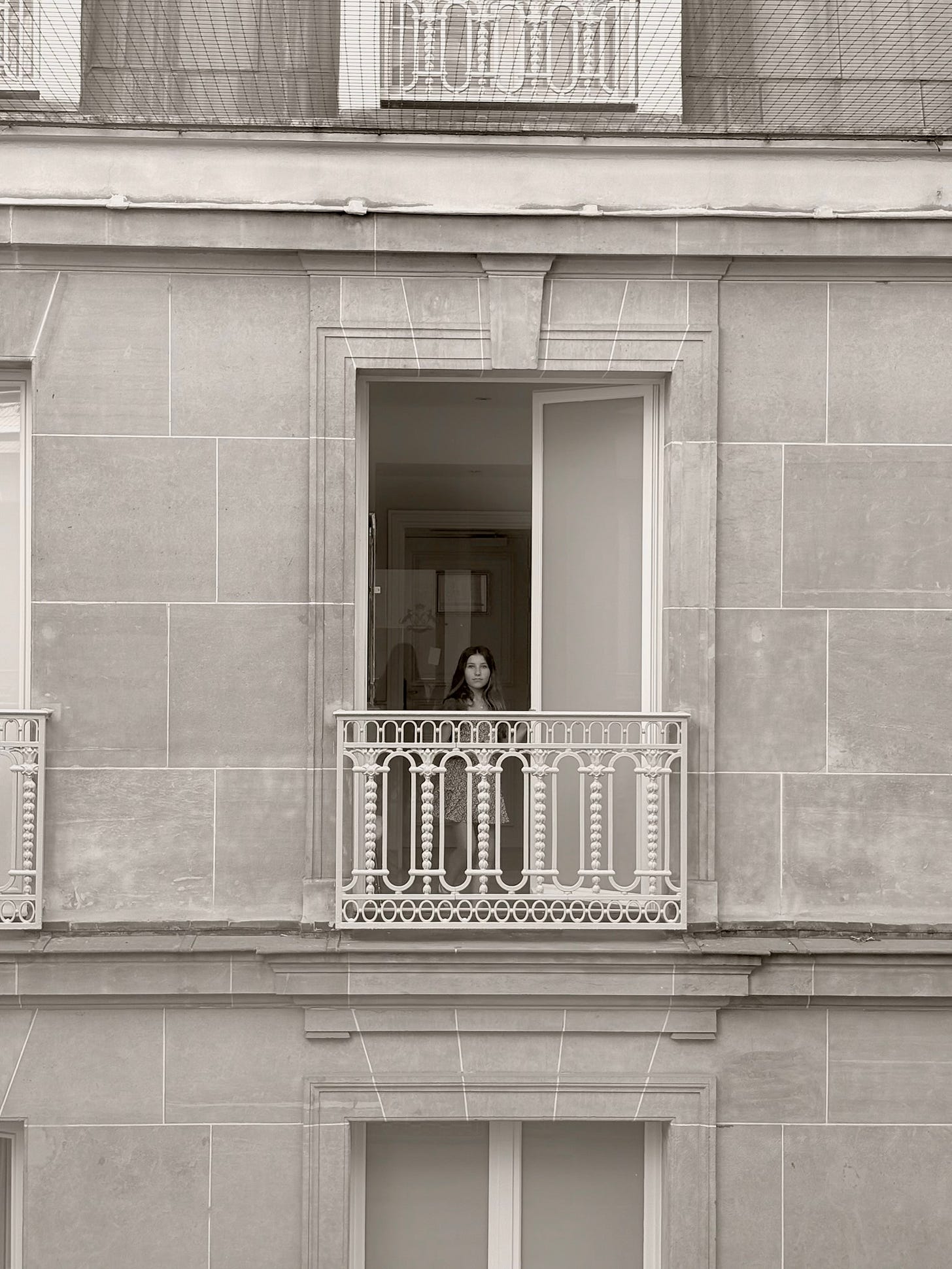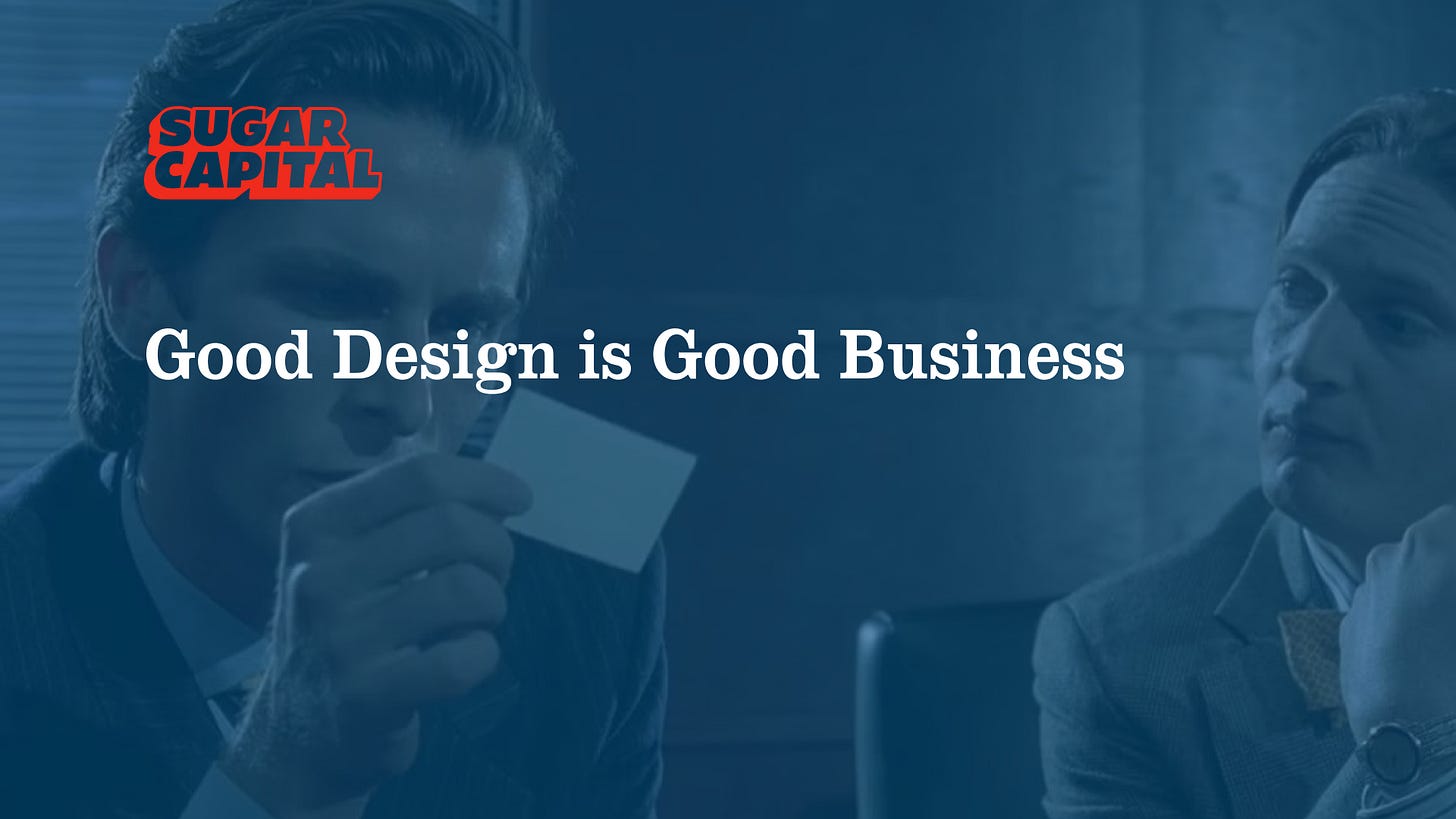Good Design is Good Business
How walking through London and Paris reminded me that design matters everywhere.
"Look at that subtle off-white coloring. The tasteful thickness of it. Oh my God, it even has a watermark." - Patrick Bateman, American Psycho (2000)
After our Portugal trip, we flew to London to drop Katie off at the London School of Economics before continuing to Paris. What began as a family transition became an unexpected lesson in how good design drives business success: not just in products or storefronts, but in every single touchpoint.
My eye for these details was sharpened years ago when I first worked at J.Crew. Arthur strategically placed me in the catalog creation department, surrounded by graphic designers who became my inadvertent teachers. I watched and listened to every interaction I could, absorbing lessons about whitespace, photography, typography, and visual storytelling. That foundation makes Europe always feel like getting hit over the head with design excellence: from landmarks like Big Ben and Buckingham Palace to the Eiffel Tower, Louvre, and Versailles.
The revelation struck during our first morning walk to get coffee in Covent Garden. I counted seventeen different businesses employing Gill Sans typography, not just on main signage, but on everything from menu boards to receipts. This was calculated design discipline. The typeface, commissioned by the London and North Eastern Railway in 1928, has become Britain's unofficial corporate vernacular.
Paris sharpened these insights. During our stay at Le Meurice, we encountered centuries of design decisions applied consistently across every detail. Being there during fashion week, with celebrities, paparazzi, and ever-present photoshoots as we explored the city, only heightened awareness of how visual excellence permeates every corner of Parisian life.

These experiences reinforced IBM's Thomas Watson Jr.'s 1973 principle: "Good design is good business." But my European observations revealed something more specific: design quality must be universal or it becomes meaningless. Every storefront, every social media post, every consumer interaction either reinforces or undermines your brand promise.
The Investor's Eye for Detail
After receiving a cold email, I invariably do the same evaluation cycle: pitch deck, website, social media presence. I'm assessing not just the business opportunity but how the team thinks about quality across every touchpoint.
Poor design signals poor execution everywhere. Sloppy customer service responses suggest careless operations. An amateurish website implies limited judgment. The most successful entrepreneurs we've backed understand that investors evaluate their design competence as proxy for overall execution ability. When your pitch deck typography is inconsistent, your website is janky, or your social media presence looks unprofessional, you're communicating that details don't matter to you.
European Lessons in Universal Excellence
Consider London's iconic black cab system: the vehicles represent the perfect marriage of form and function, with spacious interiors accommodating accessibility requirements while the turning radius, engineered for narrow Victorian streets, provides operational advantages. This thoughtful design allows drivers to command premium pricing despite ride-sharing competition.
Twenty years ago, Arthur and I started calling British pubs "flower shops" because of their magnificent floral displays: hanging baskets overflowing with petunias and geraniums, window boxes bursting with seasonal blooms. These aren't accidental decorations but systematic design investments that signal care and quality.
Paris reveals different but equally powerful principles. French retailers in Le Marais demonstrate sophisticated visual coherence extending from window displays to staff training. Our dinner at Margaux demonstrated how French establishments layer design excellence across every detail: lighting, table settings, menu typography, even staff uniforms reflect the same aesthetic philosophy.
This discipline reaches its ultimate expression at LVMH, the apex predator of luxury, where this morning's meeting at their worldwide headquarters revealed comprehensive brand management executed with Swiss timepiece precision. The reception area appeared exactly as one would expect: security personnel whose suits represented tailoring perfection, a receptionist who could have auditioned for the role. This wasn't accident but calculated strategy. Every visual element reinforced LVMH's market positioning. When you understand that brand perception accumulates through countless micro-interactions, even routine business meetings become exercises in brand theater.
The Path Forward
Companies that maintain high standards across every touchpoint build customer confidence that extends far beyond individual transactions. Social media amplifies these effects exponentially. Customers notice and share examples of exceptional attention to detail: beautiful unboxing experiences, stunning store interiors, creative product presentations.
Walking through London and Paris after years focusing on the startup culture's product-obsessed mentality, I was struck by how European businesses understand that brand perception forms through accumulated micro-interactions. The path forward requires courage to prioritize long-term brand building over short-term optimization.
Every business decision you make, every presentation you deliver, every social media post you publish either builds or erodes your brand. Design is no longer optional. It's not decoration. It's not an afterthought.
As Steve Jobs observed, "Design is not just what it looks like and feels like. Design is how it works."
When companies understand that design encompasses every customer interaction, they create comprehensive experiences that customers don't just purchase but genuinely love.
This emotional connection, built through consistent attention to detail, separates the winners from the forgotten. In a world where consumers have infinite choices and zero patience for mediocrity, design excellence becomes your competitive moat, your brand fortress, your path to enduring success.
The Europeans figured this out centuries ago. While we obsess over product features and growth hacks, they've been perfecting the art of comprehensive brand experiences. Every Gill Sans letterform, every pub flower basket, every LVMH reception area teaches the same lesson: there are no throwaway moments in business.
Design isn't a department. It's a discipline. It's not what you bolt on at the end, it's what you build from day one.
The question isn't whether design matters. The question is whether you have the courage to make it matter everywhere, every time, without exception.



This is such a great line and totally encapsulates the piece: "Design isn't a department. It's a discipline. It's not what you bolt on at the end, it's what you build from day one."
Reminds me of a TJ McConnell quote that I heard the other day: "I genuinely believe that playing hard is a skill because if it wasn’t everyone would do it." Excellence, in design and basketball, isn't accidental.
Brian as the Brits say, you are Spot On! Going through branding update as we speak so these are very meaningful observations.